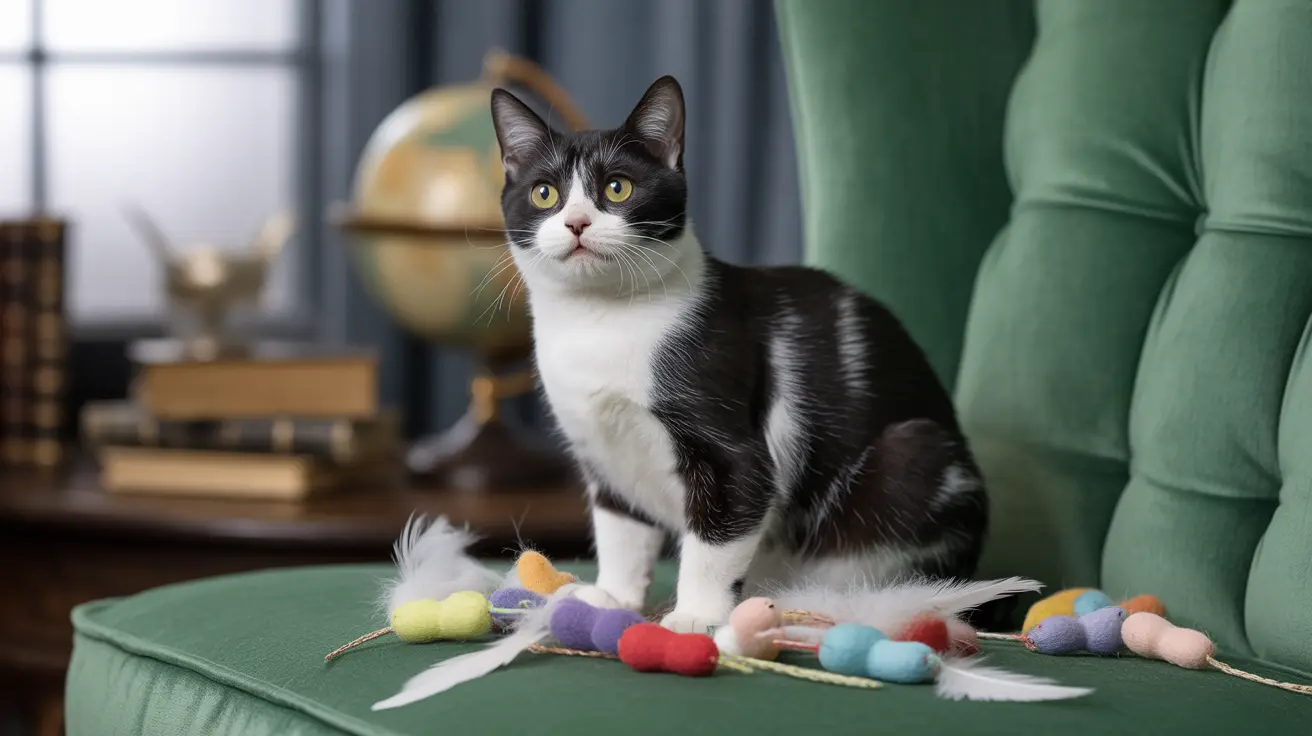Introduction
Tuxedo cats captivate pet lovers with their striking black and white coats that resemble formal eveningwear. While many assume these dapper felines belong to a specific breed, the truth is that the tuxedo pattern can appear in numerous cat breeds. This comprehensive guide will explore the various types of tuxedo cats, their distinctive patterns, and the breeds most likely to sport this elegant coat coloration.
From the classic black-and-white combination to lesser-known variations, understanding tuxedo cats helps appreciate these remarkable felines' unique characteristics and genetic diversity. Whether you're a current tuxedo cat owner or considering adopting one, this article will provide valuable insights into these charismatic cats.
Common Tuxedo Cat Patterns
The classic tuxedo pattern features a predominantly black coat with white markings on the chest, paws, and sometimes the face. However, several distinct pattern variations exist:
Standard Tuxedo
This is the most recognized pattern, featuring a black coat with a white chest "bib," white paws (often called "spats" or "socks"), and sometimes a white facial marking. The contrast creates the appearance of a formal suit, complete with a white shirt front.
Mask-and-Mantle
This variation shows a colored "mask" around the face and a colored "mantle" across the back, with white fur dominating the rest of the body. This pattern creates a distinctive cape-like appearance.
Van Pattern
Named after the Turkish Van breed, this pattern features color only on the head and tail, with the body being predominantly white. While less common in tuxedo cats, it's still considered part of the bicolor family.
Popular Breeds with Tuxedo Markings
Several cat breeds commonly display tuxedo coloration:
American Shorthair
These sturdy, adaptable cats often sport the tuxedo pattern. Known for their friendly personalities and excellent hunting abilities, American Shorthairs make wonderful family companions.
Maine Coon
The gentle giants of the cat world, Maine Coons with tuxedo markings combine the striking pattern with their impressive size and luxurious coat.
British Shorthair
These round-faced, chunky cats look particularly distinguished in tuxedo coloring, which accentuates their robust build and plush coat.
Personality and Behavioral Traits
While coat pattern doesn't determine personality, many tuxedo cat owners report similar behavioral traits:
- High intelligence and problem-solving abilities
- Strong bonds with their human families
- Playful and energetic nature
- Excellent communication skills
- Adaptability to new situations
Care Requirements
Caring for a tuxedo cat depends largely on their breed and coat length. Long-haired tuxedos require more frequent grooming to prevent matting, while short-haired varieties need basic maintenance:
- Regular brushing (2-3 times weekly for short hair, daily for long hair)
- Routine veterinary check-ups
- High-quality nutrition
- Environmental enrichment through toys and climbing spaces
- Regular dental care
Frequently Asked Questions
What are the different types of tuxedo cat patterns and how do they vary?
Tuxedo cat patterns include the classic tuxedo (black with white chest and paws), mask-and-mantle (colored face and back), harlequin (mostly white with colored patches), and van pattern (color only on head and tail). Each pattern results from different expressions of the white spotting gene.
Which cat breeds most commonly have tuxedo coloration?
American Shorthair, Maine Coon, British Shorthair, and Domestic Shorthair cats most commonly display tuxedo coloration. The pattern can appear in virtually any breed that allows for bicolor markings.
How does the tuxedo coat pattern affect a cat's personality or behavior?
While the tuxedo pattern itself doesn't determine personality, these cats are often reported to be intelligent, social, and affectionate. However, individual personality traits are more influenced by breeding and environment than coat color.
Are tuxedo cats really smarter than other cats or is that a myth?
While many tuxedo cat owners claim their pets are exceptionally intelligent, there's no scientific evidence linking coat pattern to intelligence. Cat intelligence varies individually and is more closely related to breed and upbringing.
What special care or grooming do tuxedo cats, especially long-haired breeds, require?
Long-haired tuxedo cats need daily brushing to prevent matting and maintain coat health. Short-haired varieties require less intensive grooming but still benefit from regular brushing to control shedding and maintain coat shine. All tuxedo cats need routine veterinary care, regardless of coat length.
Conclusion
Tuxedo cats remain one of the most distinctive and beloved coat patterns in the feline world. Understanding the various types of tuxedo cats and their care requirements helps ensure these charismatic pets receive the attention and care they need to thrive. Whether you're drawn to their formal appearance or their engaging personalities, tuxedo cats make wonderful companions for the right home.






